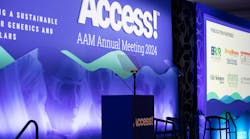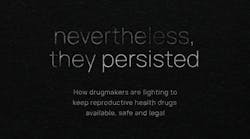Under the FDA’s Drug Competition Action Plan (DCAP), FDA committed to enhancing efficiency of the development and approval of ANDAs, with the ultimate goal of more approvals to help increase access to high-quality, lower cost generic drugs. The agency believes that additional information regarding 180-day exclusivity for specific drug products may support this DCAP goal.
Accordingly, on June 18, the FDA released a statement announcing that it is adding more data points to the Paragraph IV Patent Certifications List, which details exclusivity for brand drugs, furthering its commitment to spurring competition within the generic drug market. The agency hopes that by updating the database to include developments relating to the 180-day exclusivity of a drug, first approval dates, marketing status and blocking patents, generic drug manufacturers will be able to get a better sense of when they would be able to secure FDA approval and bring their drugs to market, potentially encouraging investment.
Pharma Manufacturing sat down with Suchira Ghosh, Counsel at Axinn, Veltrop & Harkrider LLP. Ghosh's practice focuses on regulatory and patent issues unique to the pharmaceutical industry.
PM: What is the general intent of the Paragraph IV Patent Certifications List in its current form?
SG: In its original form, the List’s information was fairly limited in scope. The information allowed an ANDA applicant to determine whether there was at least one applicant that qualified for 180-day exclusivity for a particular drug product, as well as infer whether they qualify for 180-day exclusivity based on the date of their own ANDA filing. It did not, however, disclose the number of first applicants eligible for exclusivity (in limited circumstances, 180-day can be shared), or whether the exclusivity had been “forfeited” by one or more qualifying applicants.
By revising the List, FDA appears to be making it more useful to industry for purposes of assessing the status of 180-day exclusivity for a product. The revised List includes new fields that, when populated by FDA, would provide the status of final 180-day exclusivity determinations, the number of applicants eligible for exclusivity, whether exclusivity had been forfeited, and other information about the date of first approval and marketing status that may help inform whether exclusivity has been triggered. FDA believes that these changes will aid generic manufacturers’ decisions around whether to develop a particular generic drug product.
PM: What are some of the potential effects of the FDA’s proposed updates?
SG: This increased transparency around exclusivity status could help generic manufacturers assess whether they want to develop or continue to develop a product or how quickly they can launch their own product. In short, exclusivity or the lack thereof is an important data point in generic manufacturers’ business plans.
FDA’s press release suggests that the information in the List could highlight possible gamesmanship in the market. If so, that could invite scrutiny by regulatory authorities like FTC or attract the attention of Congress and may serve as a deterrent to such behavior in the future.
The greatest effects may be seen when FDA gets around to populating the List retroactively. The List makes clear that FDA has a lot of data that could be useful in helping industry assess how FDA has been implementing the statutory 180-day exclusivity forfeiture provisions, and how underutilized or heavily utilized a particular forfeiture provision may be. That has particular interest given how focused Congress has been recently on revising the 180-day exclusivity forfeiture provisions.
PM: In your opinion, will these enhancements to the Paragraph IV Patent Certifications help reduce patent litigation?
SG: It probably has a minimal to neutral effect on patent litigation. Industry is aware that in most instances, there is one first applicant eligible for 180-day exclusivity for any listed drug, and forfeiture decisions typically don’t get made until years after patent litigation has initiated. In the case of “NCE-1” filings, where exclusivity could be “shared” by multiple first applicants, 180-day exclusivity may not be as valuable. The revised List can inform ANDA filers earlier on as to how many litigants are “first applicants,” which could have some impact on the speed or desirability of settlement out of a patent litigation.
PM: What other actions have the FDA undertaken to expedite the generic drug approval process and incite competition?
SG: Under former Commissioner Gottlieb, FDA rolled out the Drug Competition Action Plan (DCAP). DCAP is a multi-faceted approach – reducing gamesmanship by branded companies that can delay generic competition, moving faster to resolve regulatory and scientific issues so that complex generic drugs can be approved quickly, improving review cycle efficiency, and encouraging development of generic versions of products that have little market competition. This includes tangible steps by FDA, like publishing a list of drugs that have no generic versions are no longer protected by patents and exclusivity (List of Off-Patent and Off-Exclusivity Drugs Without An Approved Generic), expediting FDA review of ANDAs until there are at least three generic competitors for a branded drug, expanding criteria under which ANDAs can qualify for expedited review, rolling out a guidance implementing the Competitive Generic Therapy pathway intended to incentivize ANDA filings for drugs that have inadequate generic competition, and issuing numerous guidances directed to improving ANDA quality, encouraging complex generic drug development, and reducing gamesmanship in the citizen petition process.



